
Welcome back to Serum Visions. I’ll waste as little time as possible getting into the meat of the topic of how beer is made, but first I need to talk a little bit about why it is important to know.
The more you know about something the more appreciation you can have for it. After you have gone through the struggle of doing what ever it is you’re learning, you realize how profound the simple result of any complex process is. For example, until you have won a Pro Tour you will NEVER understand what it takes to get there. But, you can gain a better appreciation for it by learning about the process, and thus whenever you partake in an action that could lead to a Pro Tour win, you can better understand what it is you are actually doing and how much deeper it goes.
Okay, enough of that, Grain to Glass in ~1600 words! Here we go!
There are many types of grains that can go into beer, but the main one is barley. There are two main differentiations that a brewer needs to be concerned with at this point. There is brewing grade barley and feed grade for livestock. Brewer’s grade, as we’ll call it, has a larger kernel and has a lower protein content than feed grades. This aids in the conversion of the starch to sugar and also contributes to the clarity of the beer.
To the Malting Room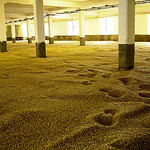
Once the barley has been harvested it goes through a malting process, this produces malted barley. You’ll have a good idea of what malted barley tastes like if you have ever had the candy called Maltzers. Anyways, essentially what happens here is the grain is hydrated and left to rest in a temperature/humidity controlled room where the kernel or seed starts to germinate. The germination is stopped just before the kernel sprouts by drying the grain to 2-4% humidity with a process called kilning: it is commonly referred to as a malt.
At this point once the grain is dried out it can now be used as a base malt, which means it can stand alone as the main source of sugar for a beer.
If however the kilning process is not stopped at 2% humidity the grain will dry out further and actually start to toast resulting in what is called specialty malts. As this happens the grain takes on an infinite number of characteristics depending on the level of toasting. The lighter toasts will add mild malty flavours and a little sweetness. The longest kilning will result in a malt called black patent malt which is black as night and will add ashy, coffee, burnt flavors to your beer. You would use this very sparingly! Again, the variations and characteristics are infinite!
Into the Mashtun We Go…
The next step is putting your grainbill or mixture of base and specialty malts together and then crushing the grains to just the right size. Once crushed, the now-called grist goes into the mashtun. For home brewers this is often an insulated cooler or an old keg that is being heated by a burner or element. During the mash the malted grains are soaked at a very precise temperature – anywhere from 148 to 158 degrees depending on the type of beer – for an hour give or take. What happens in the mash? The enzymes that were left behind from the malting convert the starch from the base malt into sugar. As for the specialty malts, the mash extracts the flavors and special compounds from them that help with things like head retention and body. After the starches are converted into a sugar called maltose and absorbed into the water, you then drain that water into your boil kettle. The water that contains the sugar from the malt is now called wort, pronounces wert.
Boil It Up and Add the Hops!
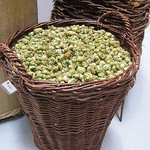
So now that the wort is in the boil kettle you turn up the heat and get it up to a strong rolling boil. There are a few reasons why we boil, the first and most important is it sterilizes the wort, and the second is to get from the hops the properties and characters we want from them. It only takes about fifteen minutes to sterilize the wort but a boil is normally an hour long: this is almost always due to the hops.
So what is it that the hops do? First, hops are a very strong preservative. Before they added hops to beer, it had a very short shelf life and spoiled quickly. They started adding hops to help with that, and thank God they did! Hops have generally three additional uses other than preserving the beer: they add bitterness, flavor, and aroma. The length of time that a brew gets boiled determines what part of its profile gets used. If it gets boiled for over 45 minutes, all of the volatile aromatic essential oils disappear and most of the flavor compounds get boiled away as well. Left are the bittering compounds from the hop called alpha acids that have been isomorized! Hops that are in the boil for half an hour or so leave their flavor compounds, and the ones that are only in the boil for 10 minutes or less are the ones that contribute to the aroma. All of the amounts and timings for adding the hops to the boil is called the hop schedule.
Cool It Down and Add the Yeast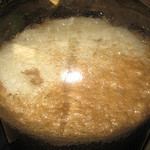
So here’s an interesting legal bit of kit. The second you add the yeast to your wort it is considered beer. Don’t ask why… it just is.
Yeast has to be the most wonderful ingredient of this whole process. It is what finally turns this bitter sweet mess into the glorious bubbly, boozy thing we call beer. What does that yeast actually do? Well, it is a living organism that loves to eat sugar and multiply! When you add or pitch the yeast into the wort it actually just starts eating the sugar. And what do living things do when they eat? They digest, produce, and remove waste. They produce and remove two different things, alcohol, which impairs your judgement, and carbon dioxide, that which carbonates the beer in bottle-conditioned beers. It does produce some other things but for our purposes this is good enough.
There are two main types of yeast, ale yeast and lager yeast. The largest difference between them is that ale yeast ferments at room temperatures or higher, and lagers ferments at just above freezing. They produce drastically different flavors and characteristics. Lagers are a very clean fermenting yeast and produce little in terms of yeast character, while ales can produce very robust flavors that most often lend themselves to the final character of the beer.
Bottle It, Baby!
The second to last step is getting the beer into a container that will eventually lead to your glass. The two most commons ways of this happening is via keg or bottle.
After the yeast is done eating up all the sugar it goes to sleep at the bottom of the fermenter and you are left with a non-carbonated or still beer. There are two ways of carbonating a beer, the most common way is by force carbonation, where they basically set up a giant soda stream and pump the right amount of carbon dioxide, sometimes nitrogen, into the beer. Once this is done, it can be put it in a keg or bottle and sent on its way. The second way is bottle carbonating. This is where a little extra sugar is added to the still beer before it goes into the bottle or keg and the yeast wakes, eats it up and the carbon dioxide it produces is enough to carbonate the beer.
The Final Destination: Your Glass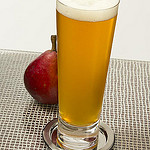
Glassware is a fantastic thing! It will most certainly get it’s own article one day. But as a brief starter, which all of this whole thing has been, glassware is a big deal. Different shapes will disperse the carbonation faster or slower, hold aroma differently, or allow the heat from your hand to warm the beer at different rates. Shakers, the most common bar beer glass, are only good for certain types of beers that want to get flat faster compared to others, and thus you should not drink a pilsner out of a shaker. Alas, I would never turn down a good beer offered in the lowly shaker.
Well there you have it: grain to glass! I skipped a lot a lot, but that will be a good base from which to start. Leave some comments and let me know what you think!
Style of the week: Pilsner
I am starting with the most accessible beer for our good friend Corbin. Budweiser is an American pilsner. We are going to seek out a Czech pilsner, the most common one being Pilsner Urquell or Czechvar. I do have a disclaimer, both of these are BMC (BudMillerCoors) beers but they are good versions of the style. If you can, find a local version of a pilsner. Chances are it will be a little different but still very accessible to a primarily-BMC drinker. When you try it, look for a slight hop character that is a little bit grassy and spicy, the flavour will be slightly grainy and a little bitterness, the mouthfeel will be creamy in the beginning and crisp on the end. If you have only had Bud, try them side by side and you will never go back.
Thanks for hangin’, more beer stuff coming in a couple weeks!
Andrew
6 comments on Andrew Colman – Serum Visions: Grain to Glass
Leave a Reply to Andrew Colman Cancel reply
You must be logged in to post a comment.

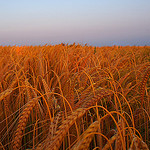
Great job getting all that info into one article… I know every section could be an article of its own. I always find it interesting how people associate color with body, the people who think “Guinness is a meal by itself,” when in reality the only difference in the grain bill is a small amount of a darker malt.
Also, don’t gloss over pilsners! One of the most underrated styles, in my opinion. I don’t think they get the respect they deserve in an “extreme beer” world. Here are my favorites:
http://www.ratebeer.com/beer/victory-prima-pils/619/
http://www.ratebeer.com/beer/troegs-sunshine-pils/14050/
And the best local pils: http://www.ratebeer.com/beer/omb-captain-james-jack-pilsner/143767/
Hi Anthony, thanks for the comment!
I hope it didn’t seem like i glossed over the Pilsener, I have a recommended length of 1200 words per article and this one is 1600 just because there was s much information. I actually wanted Pilsener to in the hopefully most read of my articles as I will probably be linking back to it with every future article from hence forth. And thus there will be a link to a championing of the Pilsner in every article.
Guinness is a special story that I am sure I will get into one day and the Extreme Beer movement is an exciting one for many reasons, but i agree that more subtle styles are getting a bit pushed aside.
Thanks for the recommendations I’ll keep my eye out for them for sure!
Andrew
I really like how this series is coming along. It’s good to have offerings like this on Brainstorm Brewery. This is mandatory reading for any and all Bud Light Lime drinkers.
I really like a good Czech pilsner, but they tend to be hit/miss. I have had about a 90% enjoyment rate with Hefeweizen and probably around 40% with Pilsner. Still, the Czechs do it best and the style has been derided a bit because of mass-market BMC pilsner-style beers that tend to be looked down on as low-brow (I say with good reason). Keep up the good work!
Hi Jason,
The reason Czech Pilsners are so hit and miss is because of where they come from and the damn bottles they come in. A pilsner should be consumed as fresh as possible… when they are coming form half way around the world that is not usually how we get them. If you are able to check the dates when you go to buy one they fresher the better.
And as for the bottles, I have no idea why anyone bottles beer in green glass, brown glass stops the UV rays from getting into the beer and green glass doesn’t. Why this is important is because after the boil the alpha acids in the hops have changed their properties and are now very sensitive to UV rays. If you find that you beer coming from a green or clear bottle smells like skunk it is because it has been light struck. If you ever get this in a restaurant ask for a new beer because the one they gave you has gone bad!
Glad your enjoying the series
Andrew
A couple addendums to some information found in this post,
1. Bud/Miller/Coors or BMC are actually American Lite Lagers not American Pilsners, after talking to a beer judge friend of mine this got cleared up. Apparently and American Pilsner according to the BJCP (google it) actually higher in alcohol and hops and came into its own during prohibition.
An entire post will be devoted to this topic at some point, but the long and short of it is that Bud has degraded itself to the tastes of the average consumer, so it was once closer to an American Pilsner but no longer is. This is debatable and I do very much love to debate :)
2. While malting they actually stop the germination just after the sprouting of the seed not just before.
Sorry about the mix up
Andrew